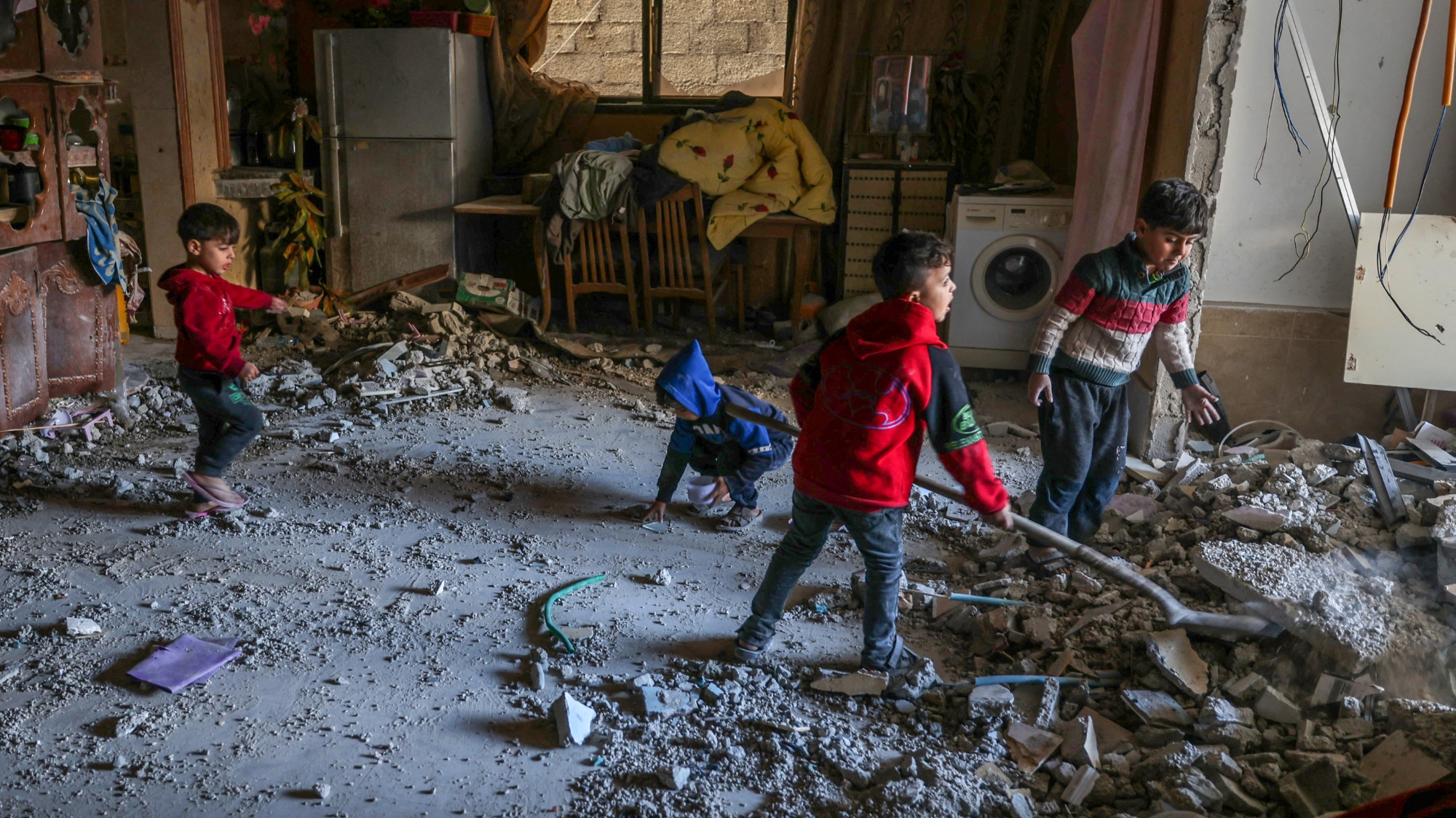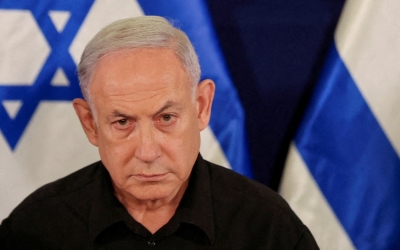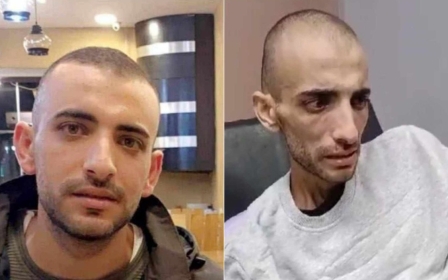War on Gaza: Israel issues new displacement orders ahead of diluted aid resolution vote

Israel issued more displacement orders on Friday for Palestinians staying in areas it previously designated as safe in Gaza, as fighter jets continued to pummel the entire besieged strip, killing and wounding dozens.
In Jabalia refugee camp in northern Gaza, air strikes killed 16 members of a single family, the al-Bursh family, in their home.
Similar attacks took place elsewhere in the north as well as in the southern cities of Khan Younis and Rafah, taking the death toll to over 20,000 with more than 53,000 more wounded.
Palestinians seeking shelter in the refugee camps of al-Bureij and al-Nuseirat in central Gaza were instructed by the Israeli army to move south.
“We can't stand it any more, I swear we can't,” Iman, a 50-year-old mother of six told Middle East Eye as she was tearfully preparing to leave al-Bureij.
New MEE newsletter: Jerusalem Dispatch
Sign up to get the latest insights and analysis on Israel-Palestine, alongside Turkey Unpacked and other MEE newsletters
“This is what we've been scared of. Since the first day of the war, I've been praying for Allah to spare us from another evacuation. I don’t know what to do with my 32-year-old disabled son. We're utterly helpless.”
Fedaa, a 36-year-old mother of three, had recently escaped Hamad City to al-Bureij when Israel launched its ground incursion into southern Gaza.
“I don't understand what they want,” she said, surrounded by her tearful children as they were waiting for a donkey-led cart to take them away.
'I don't understand what they want'
- Fedaa, Palestinian mother forced to flee shelter
“Do they want to empty Khan Younis and other areas to Deir al-Balah? I don't know where we're going to go now. We're thinking of the UN schools in Deir al-Balah, but they're already overcrowded. We can't afford to go to Rafah, where there's starvation and the prices are sky high.”
Both women only shared their first names with MEE.
In occupied East Jerusalem, Israeli forces violently dispersed Palestinians aiming to reach al-Aqsa Mosque for Friday prayers.
Police fired rubber bullets and tear gas on worshippers and sprayed them with water cannons.
Israeli authorities have been barring most Palestinians from praying at the Jerusalem site ever since 7 October.
‘Not seen since Vietnam’
Meanwhile, a report by the Associated Press said Israel’s war in Gaza is now seen as one of the most destructive military operations in recent history. “In just over two months, the offensive has wreaked more destruction than the razing of Syria’s Aleppo between 2012 and 2016, Ukraine’s Mariupol or, proportionally, the Allied bombing of Germany in World War II,” the report said.
The news agency added that the war killed more civilians than the US-led coalition’s three-year-long operation against the Islamic State group in Iraq and Syria.
Additionally, a CNN analysis found that Israel dropped hundreds of 2,000-pound bombs on Gaza.
While these bombs are used sparingly by Western governments due to their devastatingly powerful impact on civilian populations, satellite imagery showed Israel using at least 500 of them in the first month of the war.
Former US defence intelligence analyst and former UN war crimes investigator Marc Garlasco told CNN that such density in bombardment had “not been seen since Vietnam”.
Follow Middle East Eye's live coverage of the Israel-Palestine war
Israel has also used these heavy explosives on areas it had instructed Palestinians to flee to, a New York Times investigation has shown.
“The findings reveal that 2,000-pound bombs posed a pervasive threat to civilians seeking safety across south Gaza,” the report said.
Finally, in an investigation surrounding Israel’s claims that Hamas used Gaza’s al-Shifa Hospital to command their operations, the Washington Post found “no immediate evidence” to back Israel’s narrative.
The investigation also denies finding any evidence regarding links between Hamas tunnels and five hospitals Israel had claimed were used by the militant group.
All these reports come as the UN’s World Food Programme said that more than 570,000 people, or one in four people in Gaza, are reportedly starving due to the humanitarian crisis caused by Israel’s bombardment and siege.
Diluted Security Council aid vote
Following several delays and pushbacks, the US said it was now ready to vote on the UN Security Council’s resolution calling for more humanitarian aid into Gaza.
The resolution, which was already written with attempts to avoid a US veto, was further diluted following American remarks.
It has now removed calls for an “urgent and sustainable cessation of hostilities”, with some nations reportedly disappointed in this change.
The new draft now calls for “urgent steps to immediately allow safe and unhindered humanitarian access, and also for creating the conditions for a sustainable cessation of hostilities”.
The toned-down measure passed on Friday with 13 votes in favour and two abstentions.
Russia attempted to include an amendment to the measure that would include a call for an urgent cessation of hostilities, but the move was vetoed by the US.
Responding to questions regarding Russia’s vote on the resolution, deputy ambassador Dmitry Polyanski said: “Instructions are on the way and all options are on the table.”
Ultimately, both the US and Russia abstained from the vote.
Middle East Eye delivers independent and unrivalled coverage and analysis of the Middle East, North Africa and beyond. To learn more about republishing this content and the associated fees, please fill out this form. More about MEE can be found here.





